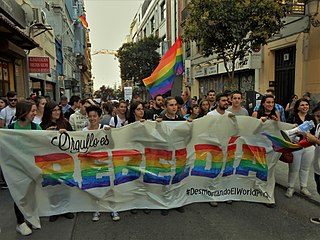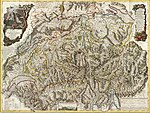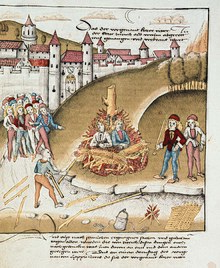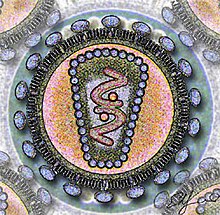
Lesbian, gay, bisexual, transgender and queer (LGBTQ) movements are social movements that advocate for LGBTQ people in society. Although there is not a primary or an overarching central organization that represents all LGBTQ people and their interests, numerous LGBTQ rights organizations are active worldwide. The first organization to promote LGBTQ rights was the Scientific-Humanitarian Committee, founded in 1897 in Berlin.
Lesbian, gay, bisexual, transgender, queer, intersex, and asexual (LGBTQIA+) people frequently experience violence directed toward their sexuality, gender identity, or gender expression. This violence may be enacted by the state, as in laws prescribing punishment for homosexual acts, or by individuals. It may be psychological or physical and motivated by biphobia, gayphobia, homophobia, lesbophobia, aphobia, and transphobia. Influencing factors may be cultural, religious, or political mores and biases.

Christopher Street Day (CSD) is an annual European LGBTQ+ celebration and demonstration held in various cities across Europe for the rights of LGBTQ+ people, and against discrimination and exclusion. It is Germany's and Switzerland's counterpart to Gay Pride or Pride Parades. Austria calls their Pride Parade Rainbow Parade. The most prominent CSD events are Berlin Pride, CSD Hamburg, and CSD Cologne in Germany, and CSD Zürich in Switzerland.

The gay liberation movement was a social and political movement of the late 1960s through the mid-1980s in the Western world, that urged lesbians and gay men to engage in radical direct action, and to counter societal shame with gay pride. In the feminist spirit of the personal being political, the most basic form of activism was an emphasis on coming out to family, friends, and colleagues, and living life as an openly lesbian or gay person.

Cologne Pride or Cologne Gay Pride is one of the largest gay and lesbian events organised in Germany and one of the biggest in Europe. Its origin is to celebrate the pride in Gay and Lesbian Culture.

Lesbian, gay, bisexual, transgender, and queer (LGBTQ) rights in Switzerland are some of the most progressive by world standards. Social attitudes and the legal situation have liberalised at an increasing pace since the 1940s, in parallel to the situation in Europe and the Western world more generally. Legislation providing for same-sex marriage, same-sex adoption, and IVF access was accepted by 64% of voters in a referendum on 26 September 2021, and entered into force on 1 July 2022.
This is a list of notable events in the history of LGBT rights that took place in the 1960s.
This is a list of notable events in the history of LGBT rights that took place in the 1970s.

Pride is the promotion of the rights, self-affirmation, dignity, equality, and increased visibility of lesbian, gay, bisexual, transgender and queer (LGBTQ) people as a social group. Pride, as opposed to shame and social stigma, is the predominant outlook that bolsters most LGBTQ rights movements. Pride has lent its name to LGBTQ-themed organizations, institutes, foundations, book titles, periodicals, a cable TV channel, and the Pride Library.

Atlanta Pride, also colloquially called the Atlanta Gay Pride Festival, is a week-long annual lesbian, gay, bisexual, transgender (LGBTQ) pride festival held in Atlanta, Georgia. Established in 1971, it is one of the oldest and largest pride festivals in the United States. According to the Atlanta Pride Committee, as of 2017, attendance had continually grown to around 300,000. Originally held in June, Atlanta Pride has been held in October every year since 2008, typically on a weekend closest to National Coming Out Day.

New York state, a state in the northeastern United States, has one of the largest and the most prominent LGBTQ populations in the world. Brian Silverman, the author of Frommer's New York City from $90 a Day, wrote that New York City has "one of the world's largest, loudest, and most powerful" LGBT communities", and "Gay and lesbian culture is as much a part of New York's basic identity as yellow cabs, high-rises, and Broadway theatre". LGBT travel guide Queer in the World states, "The fabulosity of Gay New York is unrivaled on Earth, and queer culture seeps into every corner of its five boroughs". LGBT Americans in New York City constitute by significant margins the largest self-identifying lesbian, gay, bisexual, and transgender communities in the United States, and the 1969 Stonewall riots in Greenwich Village are widely considered to be the genesis of the modern gay rights movement.
This is a list of notable events in the history of LGBTQ that took place in Spain.

The history of lesbian, gay, bisexual, and transgender people in the Netherlands has reflected the shades of tolerance or rigidity which were utilized by the rulers of the country at various periods in its history. Since World War II, the movement for LGBT rights has been galvanized by both events abroad and increasing liberalization domestically.

LGBTQ history in the United States consists of the contributions and struggles of lesbian, gay, bisexual, transgender and queer (LGBTQ) people, as well as the LGBTQ social movements they have built.
LGBT history in Kenya has been characterized by religious and colonial influences. Interactions with traders along the Indian Oceanic coastline introduced Islamic religious doctrine against homosexuality. European explorers and British colonial rule incorporated the influence of Christianity. After gaining independence in 1963, the Kenyan government has remained hostile to the LGBT community. But in the 21st century, LGBT organizations advocacy organizations have formed.

Lesbian, gay, bisexual, transgender, and queer (LGBTQ) history in Belgium has evolved through the centuries. According to LGBTQ scholars Bart Eeckhout and David Paternotte, Belgium, considered a conservative nation, developed into one of the world's most progressive and LGBTQ-friendly states. From the 16th century, Roman Catholic values influenced attitudes towards LGBTQ rights. Homosexuality and sodomy was criminalised and punished in Belgium, with gay men being put under conversion therapy by medical doctors and psychiatrists. Homosexuality was decriminalised in the 18th century, but sodomy still remained punishable until the 19th century. However, from the 21st century, Belgium developed into a more LGBTQ friendly state; Belgium's anti-discrimination law ensures that discrimination based on sexual orientation is illegal and introduces new transgender legal rights. Belgium is the second country, after the Netherlands, to open civil marriage to same-sex couples in 2003, and granted same-sex couples the right to adopt in 2006. And continues to provide asylum for individuals who may be persecuted for their sexual and gender identity. Belgium has also implemented new education policies to combat school discrimination against LGBTQ peoples and has allowed IVF and artificial insemination to be available for same-sex couples. Belgium has also supported LGBTQ politicians and expression of LGBTQ values through art.

The following is a timeline of lesbian, gay, bisexual, and transgender (LGBT) history in the 20th century.

Critical pride is the name of several annual protest demonstrations of LGBT people held in Madrid and several other Spanish cities. The organizers of critical pride demonstrations present them as an alternative to the original pride parades and festivals, which they consider depoliticized and institutionalized.

The LGBT community of Sydney, in New South Wales, is the largest in Australia and has a firm place as one of the iconic gay cities of the contemporary world. In a 2013 Pew Research poll, 79% of Australians agreed that homosexuality should be accepted by society, making it the fifth most supportive country in the survey behind Spain (88%), Germany (87%), Canada and the Czech Republic. With a long history of LGBT rights activism and the annual three-week-long Sydney Gay and Lesbian Mardi Gras festival, Sydney is one of the most gay-friendly cities in Australia and in the world.
Queer radicalism can be defined as actions taken by queer groups which contribute to a change in laws and/or social norms. The key difference between queer radicalism and queer activism is that radicalism is often disruptive and commonly involves illegal action. Due to the nature of LGBTQ+ laws around the world, almost all queer activism that took place before the decriminalization of gay marriage can be considered radical action. The history of queer radicalism can be expressed through the many organizations and protests that contributed to a common cause of improving the rights and social acceptance of the LGBTQ+ community.






















